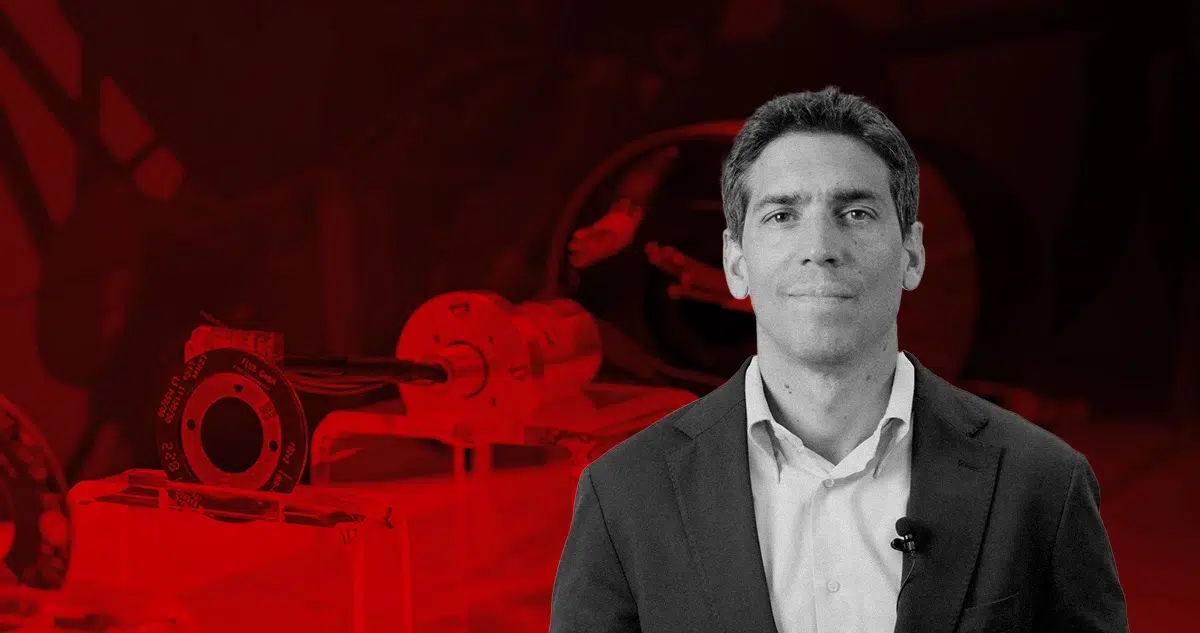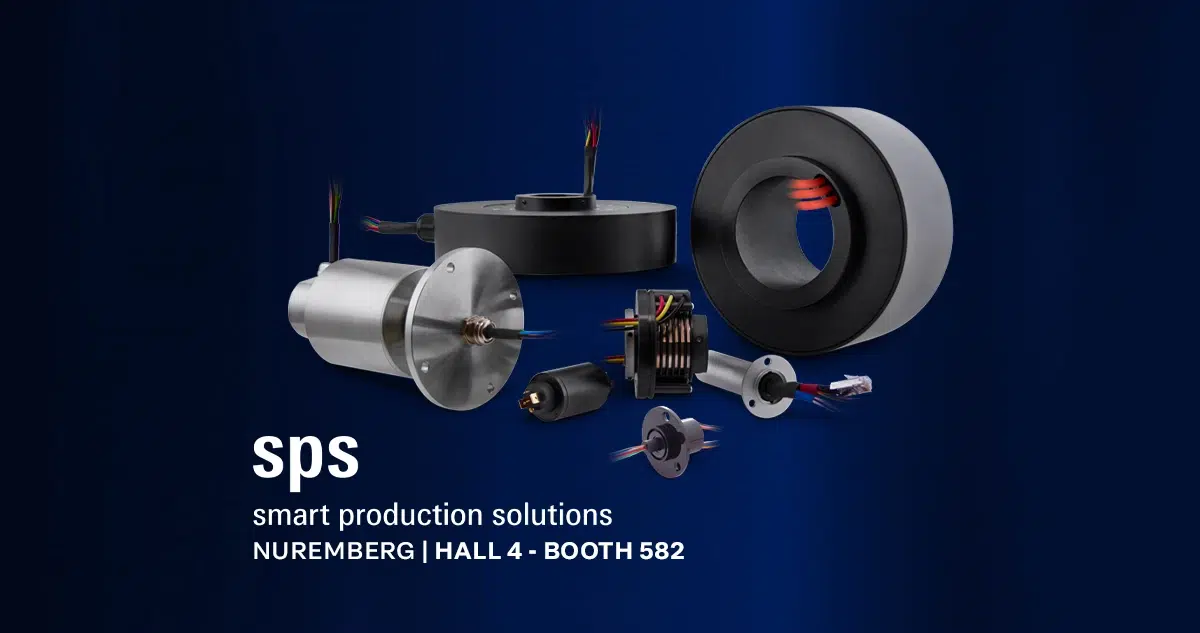Welcome to Servotecnica Slip Ring Spotlights, our new interview series offering a behind-the-scenes look at the people driving innovation in rotary transmission technology at Servotecnica. In […]

Welcome to Servotecnica Slip Ring Spotlights, our new interview series offering a behind-the-scenes look at the people driving innovation in rotary transmission technology at Servotecnica.
In this first edition, we sit down with Alessandro Gomarasca, Product Manager at Servotecnica, to explore how customization is shaping the next generation of slip ring solutions.
Q: Thanks for joining us, Alessandro. To start, could you tell us a bit about your background and your role at Servotecnica?
A: Certainly! I’ve been with Servotecnica for several years now. I actually started out on the engineering side, working in the technical office, which gave me a solid foundation in how our products work. After a few years, I transitioned into a Product Manager role for several product lines, including our slip rings. In this role, I bridge the gap between the technical development and the customer needs, essentially making sure that what we design in-house truly solves the problems our clients have. It’s a rewarding position because I get to collaborate with both our engineering team and our customers to drive innovative solutions.
Q: The theme of this interview is customization. How does Servotecnica approach customizing slip rings for different applications?
A: Customization is at the heart of what we do with slip rings. We recognize that no two applications are exactly the same, so we’ve built a very broad range of slip ring designs to start with. In fact, Servotecnica offers more than 2,000 standard models of electrical rotary joints, plus around 400 custom models we’ve developed for specific needs. Having this large portfolio means we can mix-and-match or tweak designs to closely fit a client’s requirements. Our engineering team works closely with customers to tailor every aspect of the slip ring: the size, the number and type of circuits, the choice of connectors and cables, materials, and so on. For example, we make slip rings as small as about 12.4 mm in diameter for tight spaces, and we also build larger through-bore slip rings up to 100 mm or more for applications that need a big opening (like running a pipe or shaft through the center).
We’ve produced stainless-steel housed slip rings and IP65-rated units for harsh environments where dust or water are a concern. Essentially, our approach is to listen to the specific goals and constraints of the project and then modify or reinvent the slip ring design to fit. This can be as simple as changing a mounting flange or as involved as a complete custom-build from scratch. It might take extra engineering effort, but it means the customer gets a solution that just works for their scenario, rather than forcing their system to adapt to a standard off-the-shelf part.
Q: Can you share an example of a custom slip ring solution you worked on and how it solved a specific challenge?
A: Two standout projects come to mind. One was for a rigid fixed wingsail used in marine propulsion. The customer needed a way to transmit power and control signals to sensors and actuators inside a rotating sail structure exposed to salt spray, wind, and vibration. We developed a 20-channel custom slip ring housed in an IP65-rated enclosure, compact enough to fit within the sail’s tight mechanical envelope while offering reliable operation in harsh marine conditions.
The other was for wind turbines, where we were asked to design a robust slip ring for pitch control systems and sensor feedback. These turbines operate in remote locations and extreme weather, so the slip ring needed to combine high-current power channels with low-noise signal transmission, all in a sealed, low-maintenance design. Our modular, long-life solution helped ensure consistent turbine performance while minimizing downtime and servicing needs.
In both cases, customization was key to meeting demanding technical and environmental requirements.
Q: In what industries or use-cases have you seen the greatest demand for custom slip ring designs?
A: We see a strong demand for custom slip rings in industries that push the limits of what standard components can do. Often it’s because of unique constraints like extremely limited space, unusual electrical specifications (say very high voltages or a large number of circuits), or harsh operating environments that standard units weren’t designed for. For example, the aerospace and defense sector frequently requires custom solutions, think of slip rings in satellites or military radar systems, where reliability under extreme conditions is non-negotiable and designs might need to handle vacuum, radiation, or high G-forces. Medical devices are another area; a good example is medical imaging equipment (like CT or MRI machines) which use slip rings for power and data transfer in the rotating scanners. Those often call for custom-engineered rings to ensure absolutely clean signal transmission and to meet strict safety standards. Advanced robotics (including humanoid robots and robotic arms) is a growing field for us. These robots often have very tight space and weight constraints in their joints, so we develop miniature, lightweight slip rings tailored to those needs. In robotics, sometimes we’re also asked to combine electrical channels with things like fluid or fiber-optic lines, depending on the robot’s functions. Beyond those, we’ve done custom work for industrial automation systems where the environment is extreme. For instance, an assembly machine that runs 24/7 at high speed or a processing plant where the equipment is exposed to a corrosive atmosphere. In short, any application with demands that fall outside the norm is a candidate. In these cases, a custom slip ring isn’t about adding complexity for its own sake, but rather ensuring the component can handle the job reliably where a generic solution would fall short.
Q: From a technical perspective, what are some challenges you face when designing a custom slip ring?
A: Designing a custom slip ring can be a complex engineering exercise. We often have to balance several competing factors. In my experience, the key challenges include:
- Space constraints: Many custom projects come to us because the available space is very tight. We might have to fit a lot of functionality into a miniature slip ring without sacrificing performance. The challenge is to make it extremely compact while still handling the required circuits and not compromising on durability. Every millimeter counts, especially in applications like robotic joints or small instruments.
- Signal integrity: When transmitting data (or mixed power and data) through a slip ring, maintaining signal quality is critical. We have to ensure that rotation doesn’t introduce noise or interference. This can be challenging if you have high-speed data lines alongside power lines in the same slip ring. We address it by careful internal design whilst using shielding, separating signal types, maybe even using fiber-optic channels for particularly sensitive signals. The goal is that the signals come through cleanly, as if there were no rotating interface at all.
- Durability and wear: Slip rings by nature have moving contacts (in most designs), which means eventually some wear. For custom units, especially if they’re going into continuous-duty or mission-critical systems, we have to choose materials and contact techniques that maximize longevity. This could mean using special alloys for contacts, low-wear brushes, or even exploring non-contact technologies like inductive coupling if appropriate. It’s always a challenge to ensure a long service life while the device is constantly in motion.
- Environmental conditions: A lot of custom applications involve harsh conditions. It can include anything from high/low temperatures, dust and moisture, to vibration and shock. Designing a slip ring for these means we often incorporate seals, robust housing materials, and shock-absorbing structures. For example, we might use O-rings and IP-rated enclosures for waterproofing, or stainless steel and special coatings for corrosion resistance. Each added protection, however, can increase size or complexity, so we have to strike a balance. Ensuring the final design can survive the environment without failing is a big part of the job.
Each project might throw a new twist at us, but overcoming these kinds of challenges is exactly what makes custom design fun and rewarding as an engineer.
Q: Finally, any advice you would give to engineers or customers when they’re considering a custom slip ring solution?
A: Absolutely. I have a few pieces of advice for anyone thinking about going the custom route:
- Define your requirements clearly upfront: The more detail you can provide about what you need e.g. number of circuits, current/voltage, signal types (Ethernet, analog, RF, etc.), rotation speed, size limits, environmental conditions, the smoother the design process will go. Customization is all about tailoring to requirements, so it really helps us if we have a clear picture of the operating scenario from the start.
- Consider if off-the-shelf could work, but be honest about the trade-offs: It’s always worth checking if a standard slip ring meets your needs, and we’ll tell you if one of our catalog models is a good fit to save you time and cost. However, don’t try to force a standard unit into an application if it doesn’t really meet the spec. Using a slip ring that isn’t up to the task can lead to more costs and downtime in the long run. I’ve seen cases where a stock component caused issues (overheating, signal loss, premature wear) because the application was too demanding, and the user ended up coming back for a custom design anyway. It’s better to address the needs head-on from the beginning.
- Work closely with the supplier’s engineering team: Custom design is a collaborative process. When customers engage with us early and openly, we can usually come up with a better solution faster. It helps to discuss the challenges together – often we can suggest ideas they might not have considered, like alternative configurations or combining functionalities. Remember that we’ve likely tackled similar problems before, so leverage that experience. A good partnership can really streamline development and ensure the final product meets expectations.
- Plan for a bit more lead time: Custom slip rings do take longer than picking something off the shelf. There’s design, prototyping, testing, and refinement involved. Depending on complexity, it could take several weeks or a few months from concept to finished product. For instance, a fully bespoke slip ring assembly might have a lead time on the order of 10–12 weeks or more. So factor that into your project timeline. The earlier you start the conversation, the better. And likewise, custom units will cost more than standard ones due to the engineering effort, it’s an investment toward getting exactly what you need. Just keep that in mind for budgeting.


